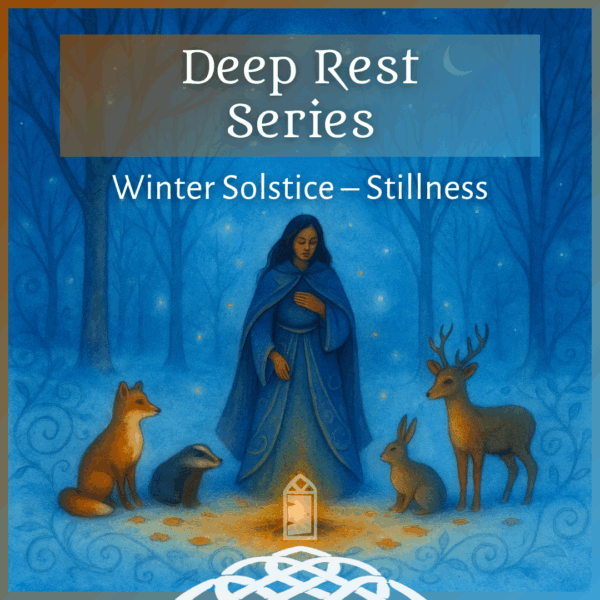 Dearest monks and artists,
Dearest monks and artists,
Lent is a powerful season of transformation. Forty days in the desert, stripped of our comforts, and buoyed by our commitment to daily practice so that we might arrive at the celebration of Easter deepened and renewed.
But often, we arrive at the glorious season of resurrection and celebrate for that one day, forgetting it is a span of 50 days, even longer than the Lenten season through which we just traveled. Easter is not just the day when the tomb was discovered empty, but a span of time when days grow longer in the northern hemisphere, blossoms burst forth, and we are called to consider how we might practice this resurrection in our daily lives.
The soul’s journey through Lent is like a pilgrimage exploring inner desert places, landscapes, thresholds, and the experience of exile. Ultimately, pilgrimage always leads us back home again with renewed vision. Resurrection is about discovering the home within each one of us, remembering that we are called to be at home in the world, even as we experience ourselves exiled again and again.
And perhaps there is no place of greater exile than what many of us experience in relationship to our bodies in this fast-paced consumer culture. We spend money on products to make ourselves more beautiful. We diet and fast and often go to extremes to try to mold ourselves to an external model of bodily “perfection.” We seek out quick fixes through a variety of medications. Over and over again, we are sold a thousand ways to be unhappy with our physical beings.
The Gospel readings during the Easter season are about the resurrection appearances of Jesus, and many of them have to do with the life of the body: Thomas doubts and needs to touch Jesus’ wounds; the nets are pulled ashore overflowing with fish; the disciples on the road to Emmaus recognize Jesus in the breaking of the bread; Jesus breathes on them the gift of the Spirit; and of course there is the celebration of breath and fire at Pentecost. In all of these stories, there is a sense of generosity and abundance, of caring for physical needs, and of finding solace and assurance in the wounds.
Beyond bunnies, baskets, chocolate, and jelly beans, Easter calls us to the profound practice of resurrection of the body. Lent calls us to the simplicity of ascetic practices like fasting with holy purpose. Easter calls us to the generous celebration of these bodies, which are such faithful companions.
Resurrection is about entering the fire of our passion and letting it burn brightly. It is about what enlivens us and makes us feel vital—releasing fear and anxiety over what is to come, and embracing this moment here and now. Resurrection calls us to experience the full weight and lightness of our physical being, to claim the beauty of our embodied selves, and to let gratitude for these vessels of aliveness overflow.
Imagine if, during the Easter season, we each took on practices like these:
- Make a commitment to move slowly through the world, resisting the demand for speed and productivity that is tearing our bodies apart and wearing them down to exhaustion.
- Reject compulsive “busyness” as a badge of pride and see it for what it is—a way of staying asleep to your own deep longings and those of the world around you.
- Pause regularly. Breathe deeply. Reject multitasking. Savor one thing in this moment right now. Discover a portal into joy and delight in your body through fragrance, texture, shimmering light, song, or sweetness.
- Let yourself experience grief for the vulnerabilities of your body. Be exquisitely tender with yourself and all of the aches and pains and limitations of embodied life. Make a space within to welcome in the sorrow of difficult memories.
- Any time you begin to hear the old voices of judgment rise up about your body—whether self-consciousness or criticism or denial—pause and breathe. Then stand firm against those voices, as the desert elders counseled us to do, and tell them you will not offer them sanctuary anymore.
- Play some music you love, and dance. Be present to the body’s desires in response. Perhaps just a finger tapping at first. Then slowly let the impulse travel up your arm and across your chest, taking root in your heart, so that your dance might emerge from this place. Even just imagining yourself dancing can bring you alive.
- Roll around on the grass, the way dogs do with abandon. Release worries about getting muddy or cold or looking foolish. The body isn’t concerned with keeping things neat and tidy. Don’t hold yourself back.
- Every day, at least once, say thank you for the gift of being alive. Every day, at least once, remember the One who crafted you and exclaimed, “That is so very good.”
- Allow a day to follow the rhythms of your body. Notice when you are tired, and sleep. When you are hungry, eat. When your energy feels stagnant, go for a long walk. In truth, it often takes several days to sink into this kind of attunement, but begin to consider how you might invite this awareness into your daily life.
- Be present to the earth-body, which is the matrix of our own being. The earth offers herself so generously for nourishment. Remember that earth-cherishing is intimately connected to cherishing your own embodied being.
What does it mean for us to not just say we believe in a resurrected life, but to truly practice resurrection?
Do you breathe in the gift of the Spirit? What will your practices of resurrected life be?
With great and growing love,
Christine
Christine Valters Paintner, PhD, REACE
Photo © Christine Valters Paintner


